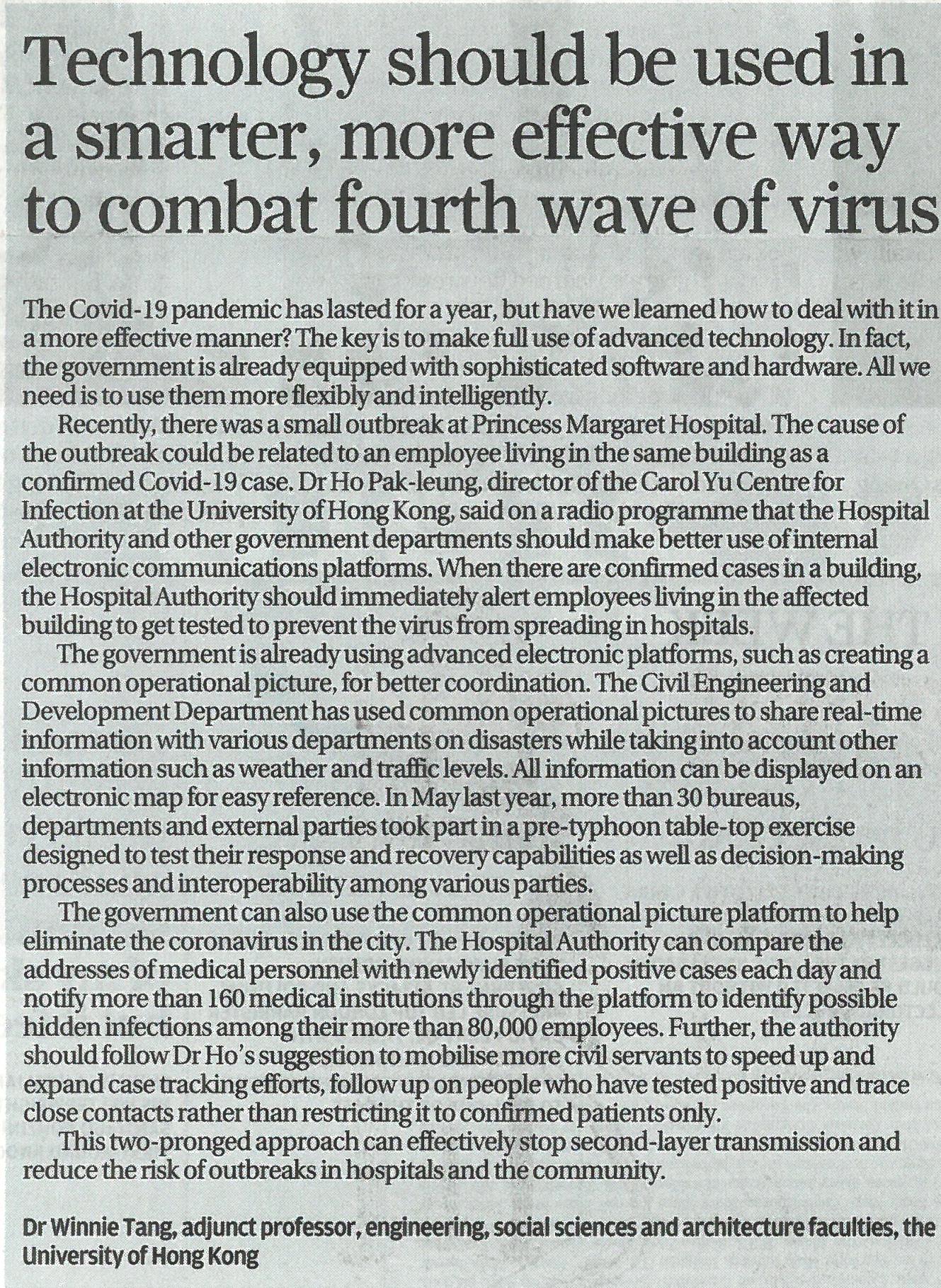網上版請按此

Technology should be used in a smarter, more effective way to combat fourth wave of virus
The Covid-19 pandemic has lasted for a year, but have we learned how to deal with it in a more effective manner? The key is to make full use of advanced technology. In fact, the government is already equipped with sophisticated software and hardware. All we need is to use them more flexibly and intelligently.
Recently, there was a small outbreak at Princess Margaret Hospital. The cause of the outbreak could be related to an employee living in the same building as a confirmed Covid-19 case. Dr Ho Pak-leung, director of the Carol Yu Centre for Infection at the University of Hong Kong, said on a radio programme that the Hospital Authority and other government departments should make better use of internal electronic communications platforms. When there are confirmed cases in a building, the Hospital Authority should immediately alert employees living in the affected building to get tested to prevent the virus from spreading in hospitals.
The government is already using advanced electronic platforms, such as creating a common operational picture, for better coordination. The Civil Engineering and Development Department has used common operational pictures to share real-time information with various departments on disasters while taking into account other information such as weather and traffic levels. All information can be displayed on an electronic map for easy reference. In May last year, more than 30 bureaus, departments and external parties took part in a pre-typhoon table-top exercise designed to test their response and recovery capabilities as well as decision-making processes and interoperability among various parties.
The government can also use the common operational picture platform to help eliminate the coronavirus in the city. The Hospital Authority can compare the addresses of medical personnel with newly identified positive cases each day and notify more than 160 medical institutions through the platform to identify possible hidden infections among their more than 80,000 employees. Further, the authority should follow Dr Ho's suggestion to mobilise more civil servants to speed up and expand case tracking efforts, follow up on people who have tested positive and trace close contacts rather than restricting it to confirmed patients only.
This two-pronged approach can effectively stop second-layer transmission and reduce the risk of outbreaks in hospitals and the community.
Dr. Winnie Tang
Adjunct Professor, Department of Computer Science, Faculty of Engineering; Department of Geography, Faculty of Social Sciences; and Faculty of Architecture, The University of Hong Kong